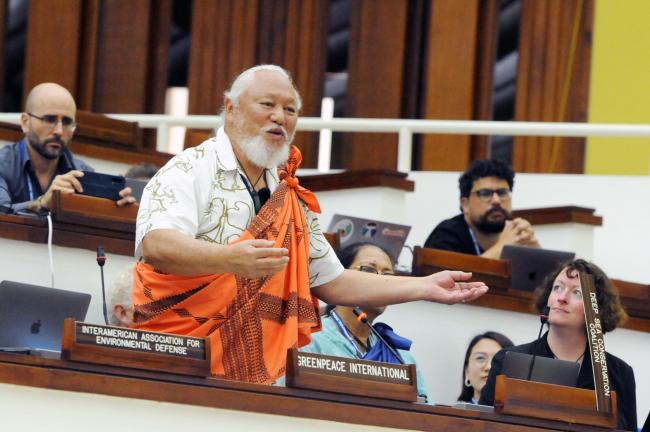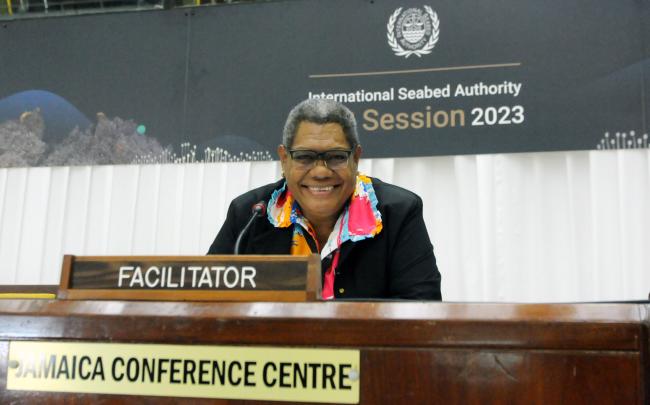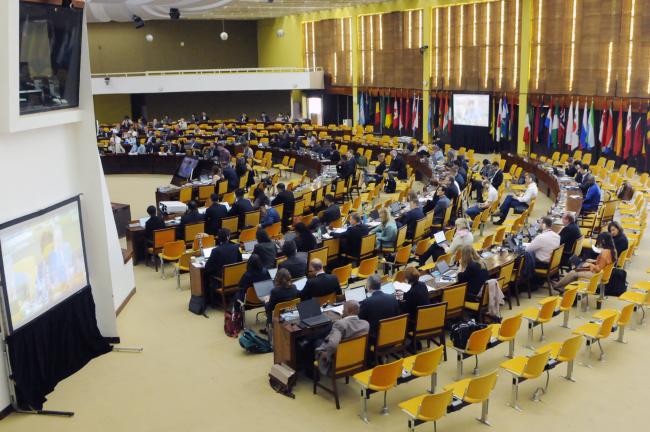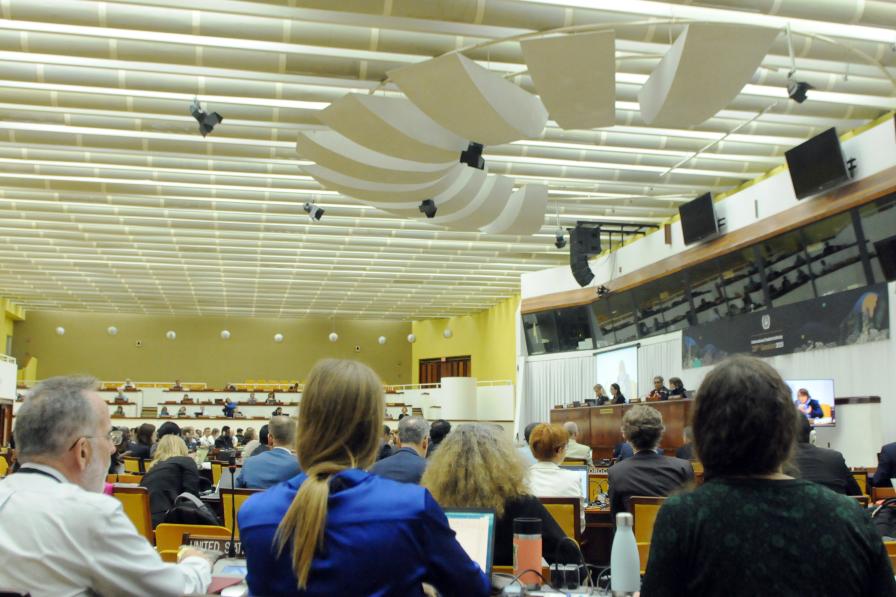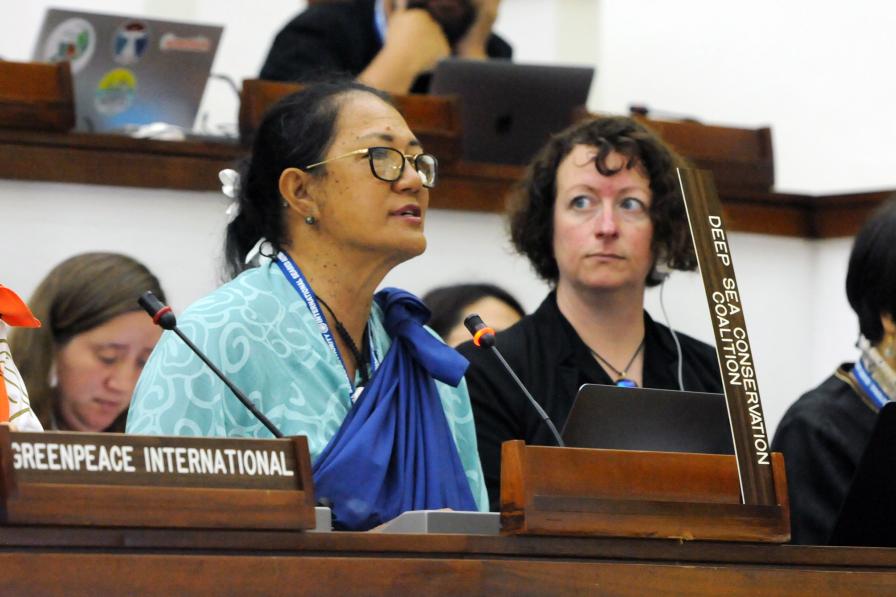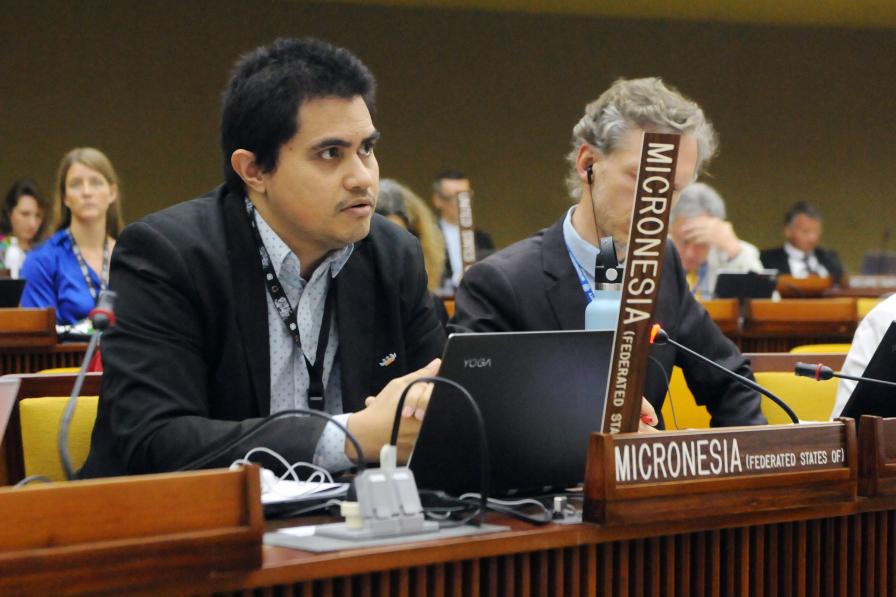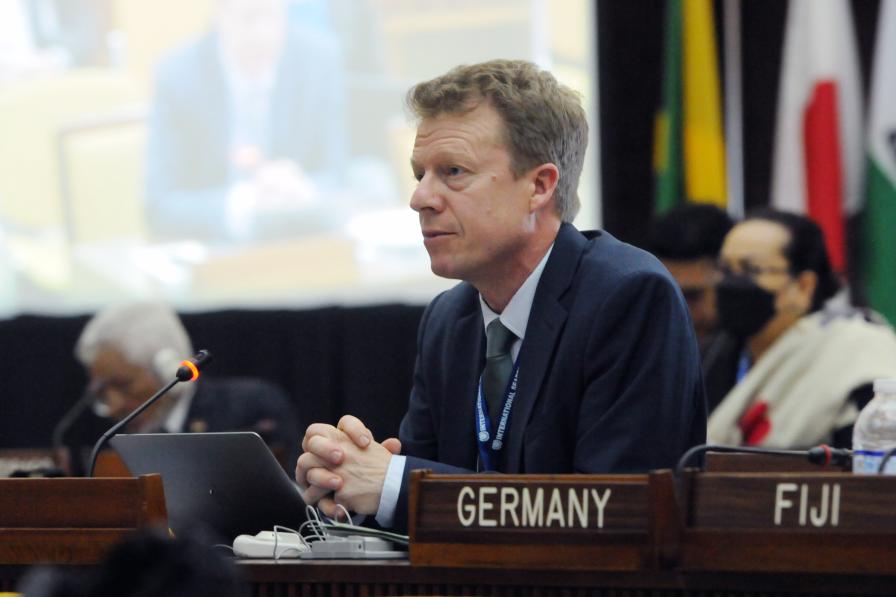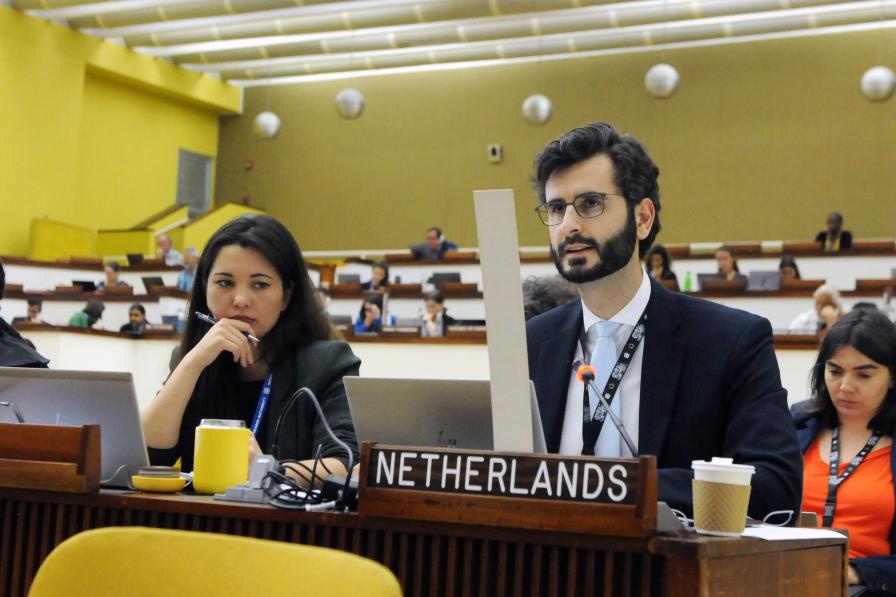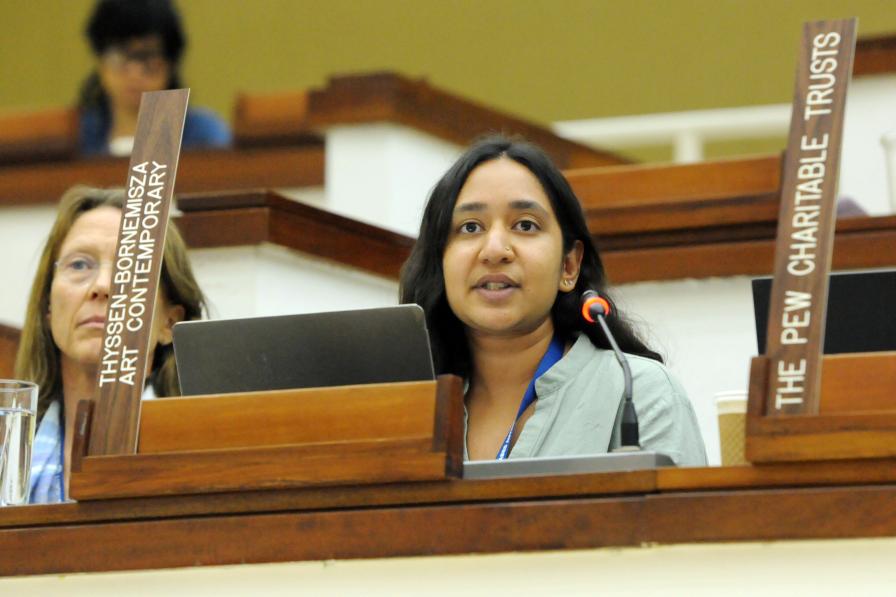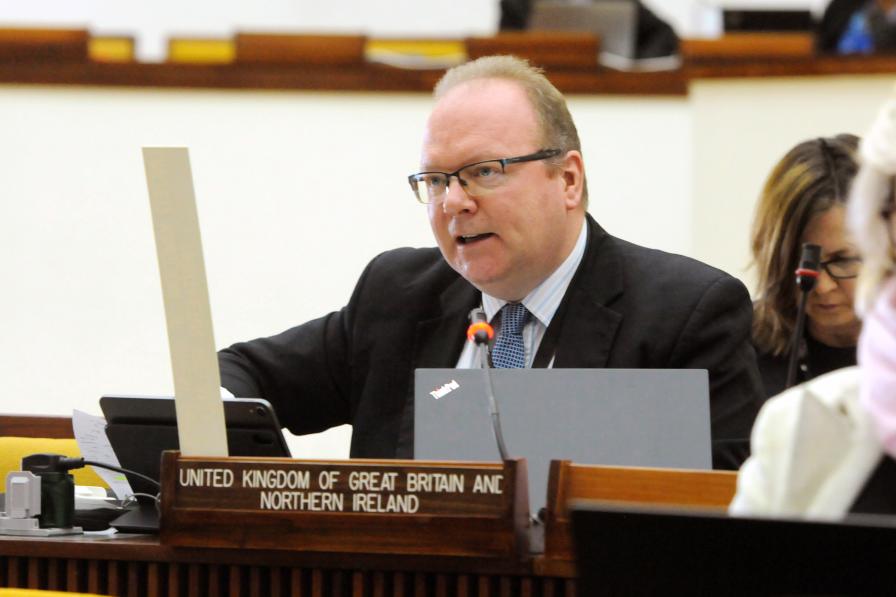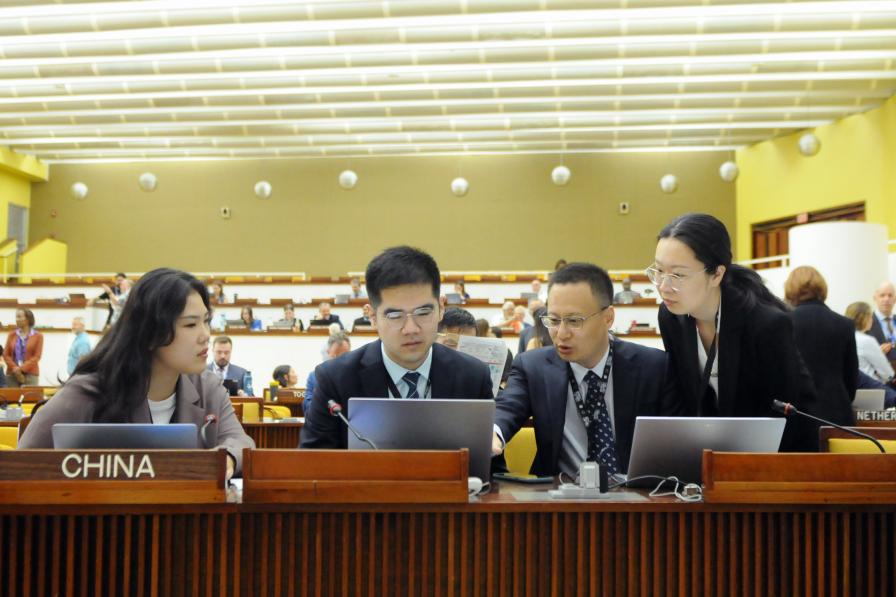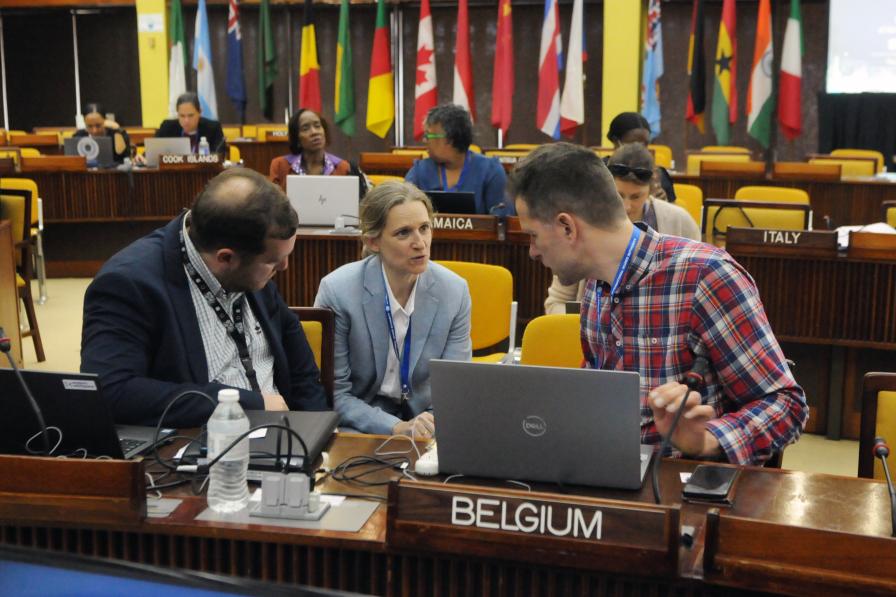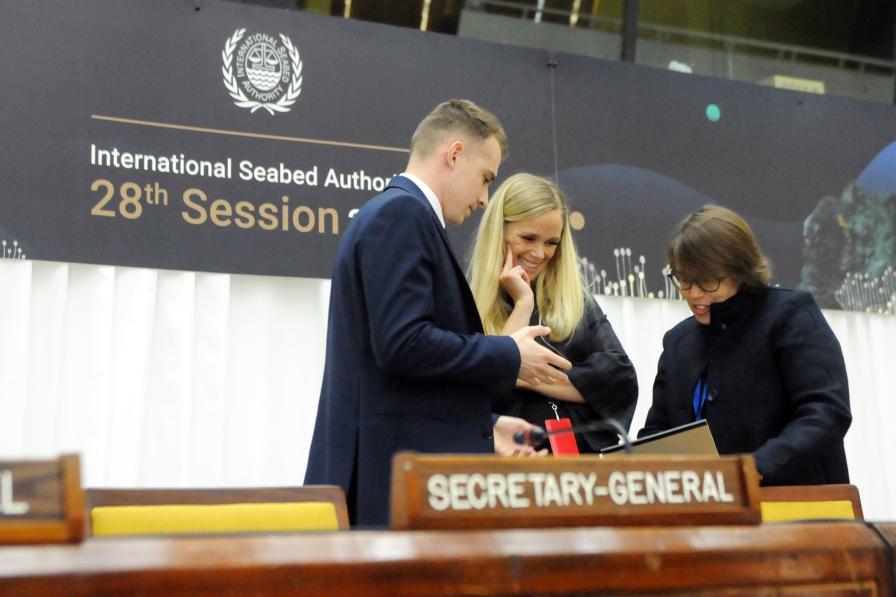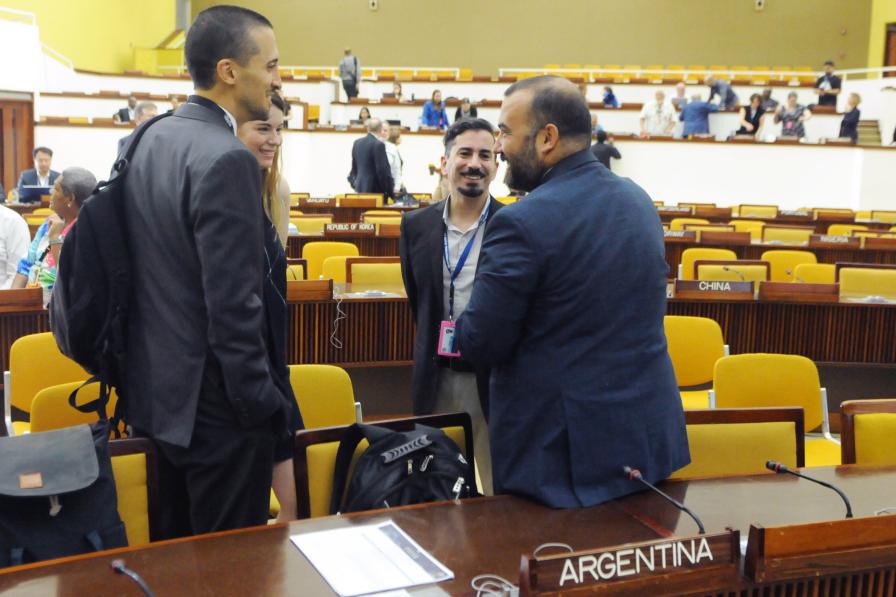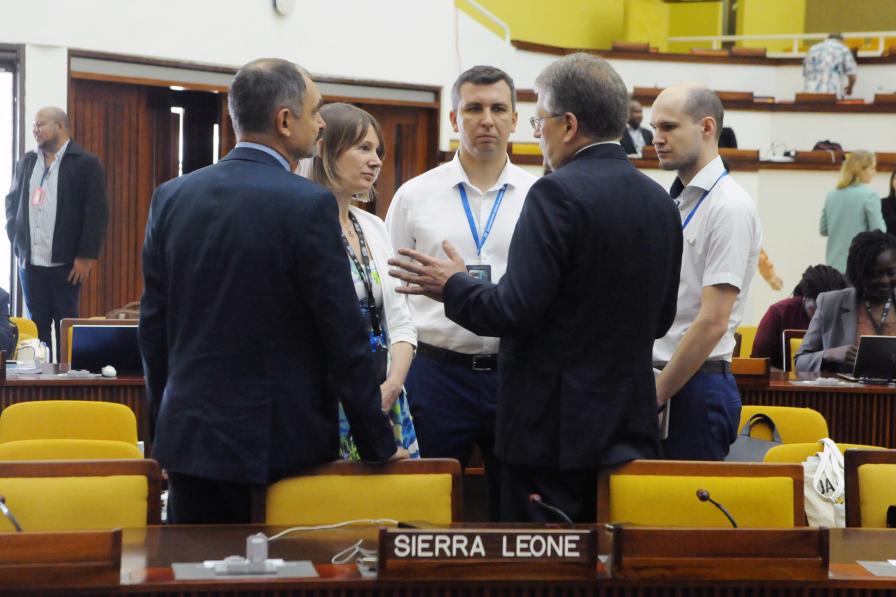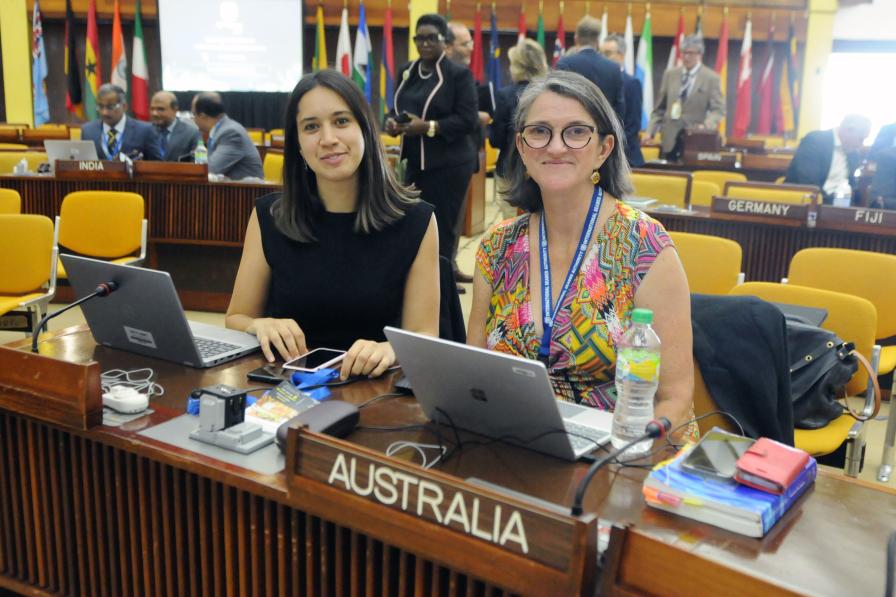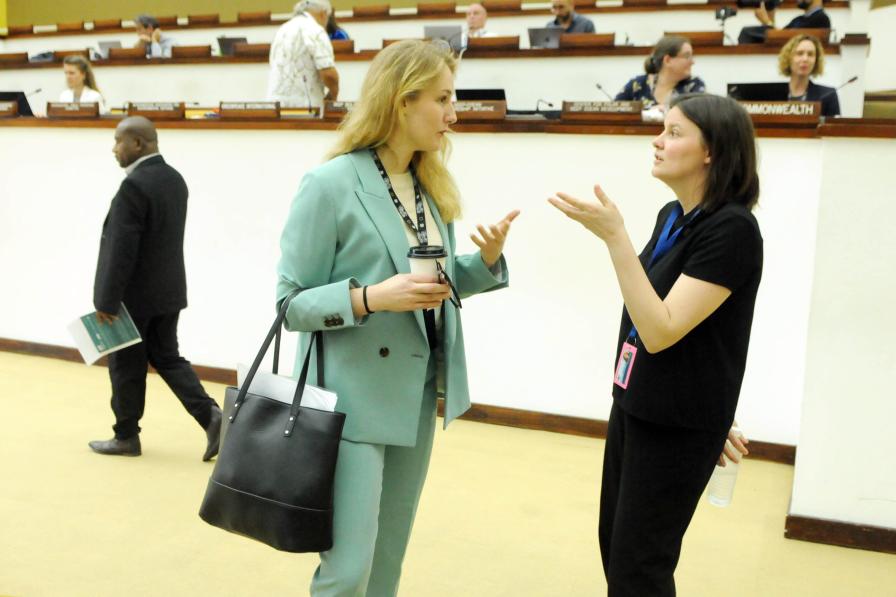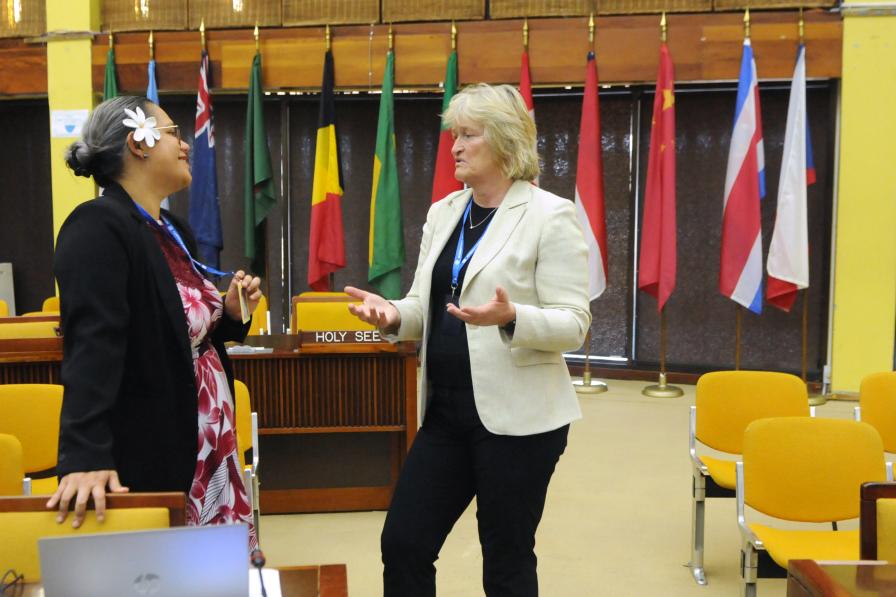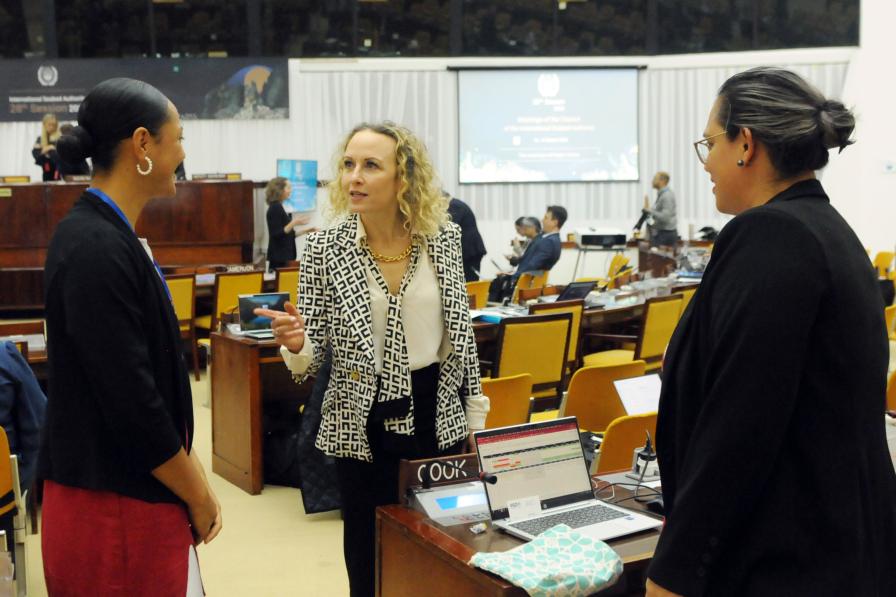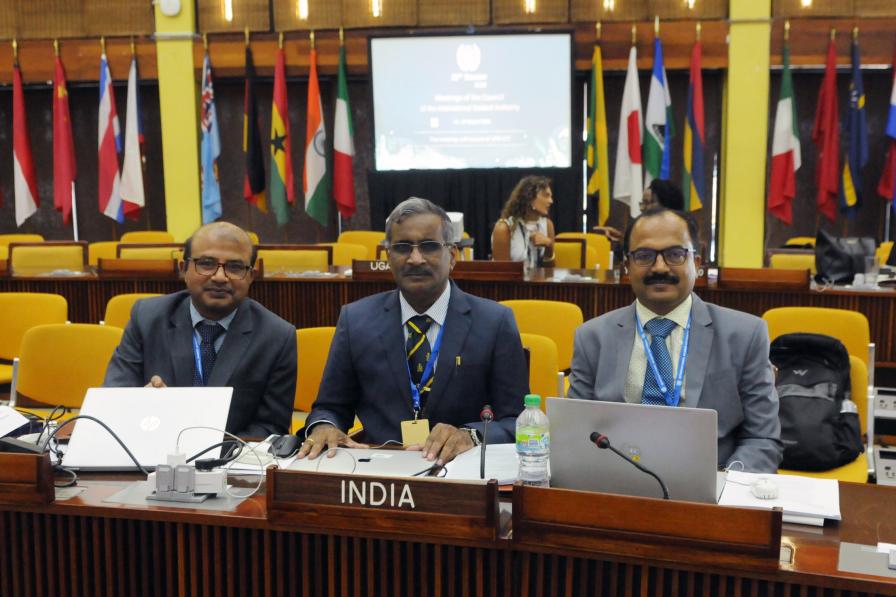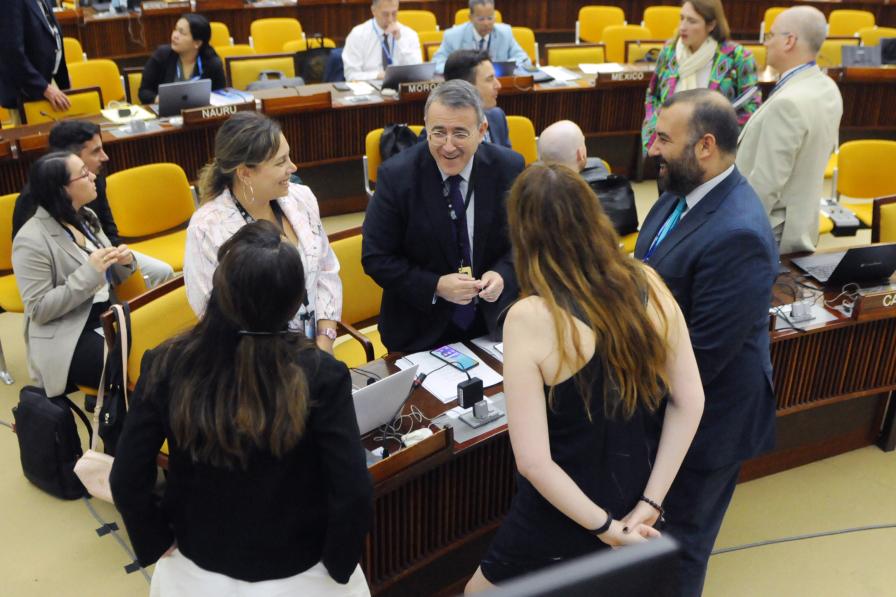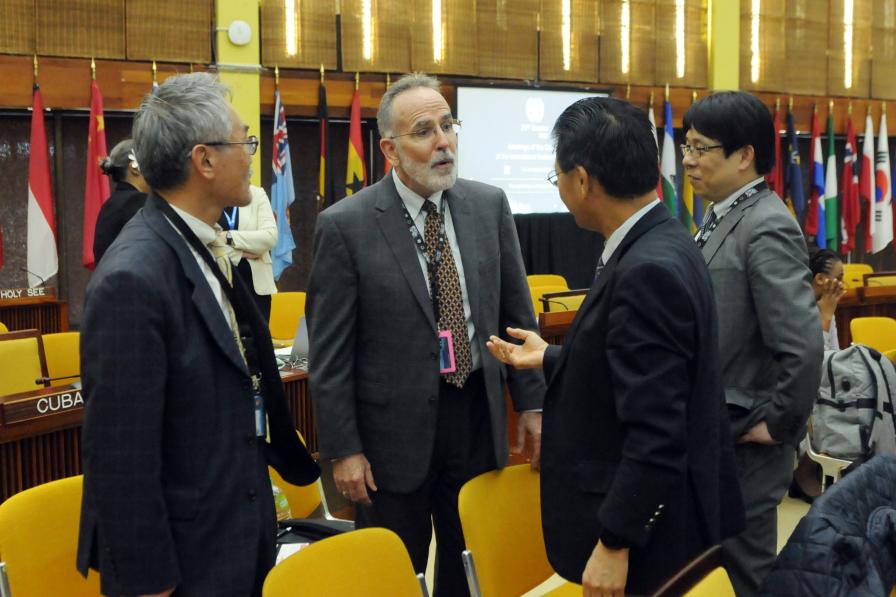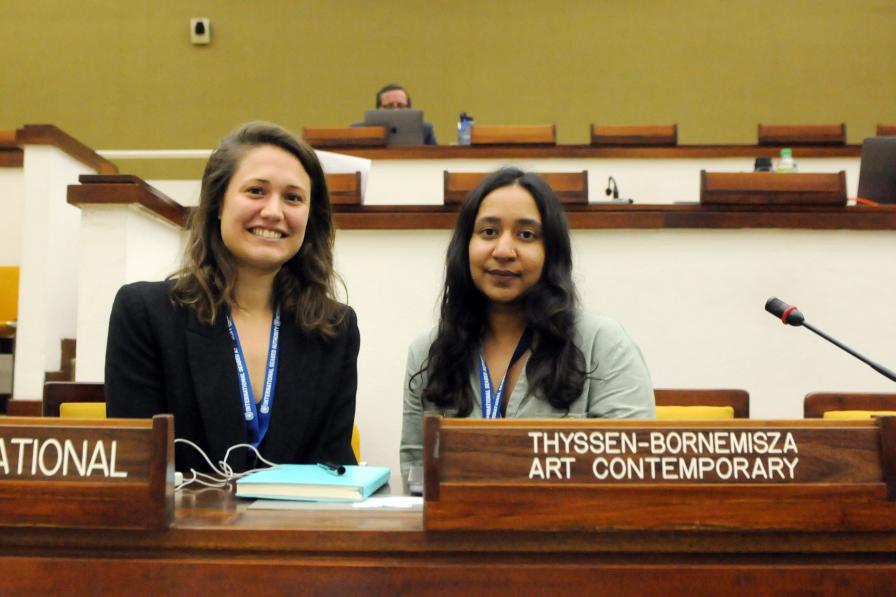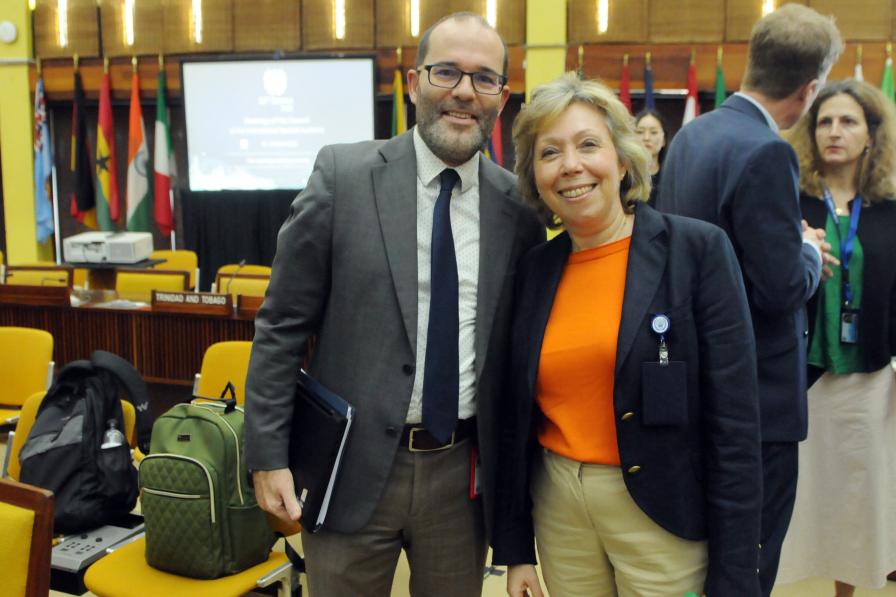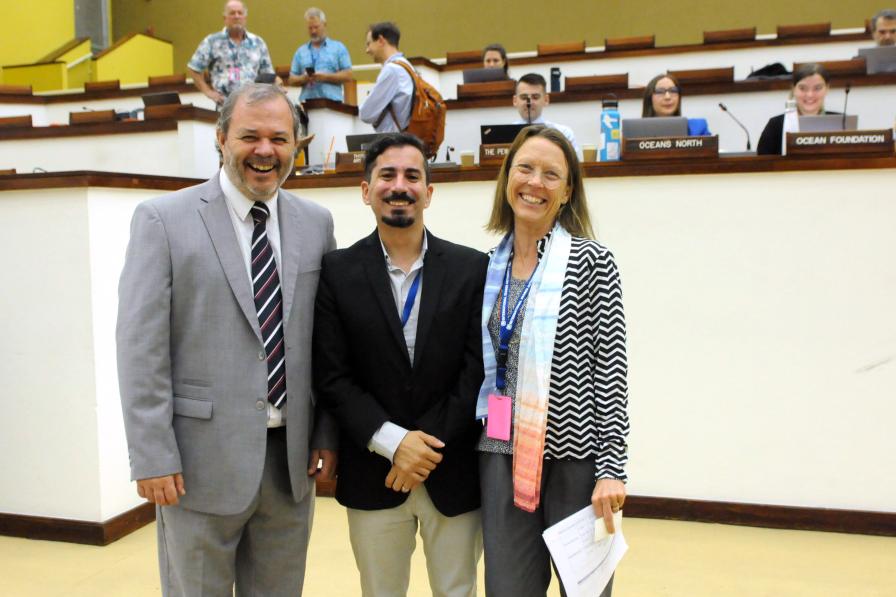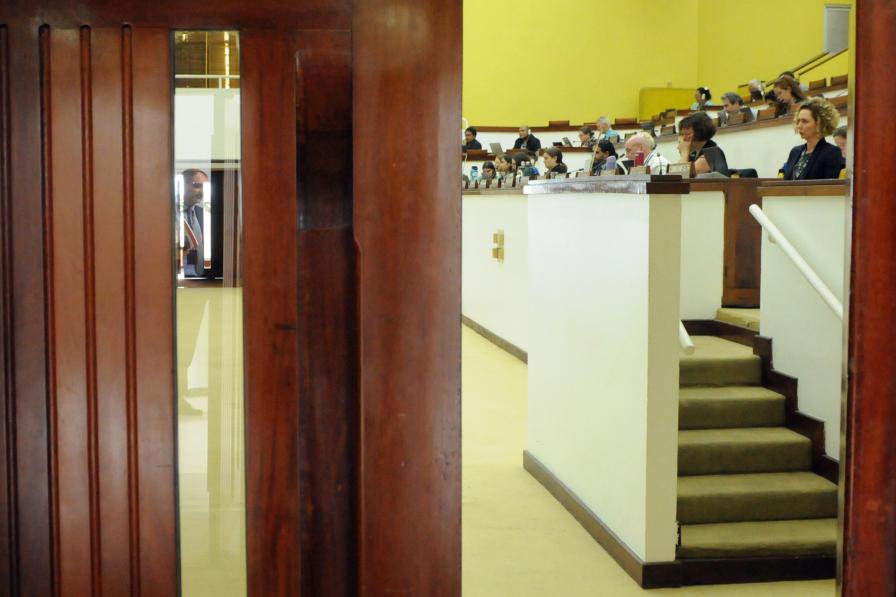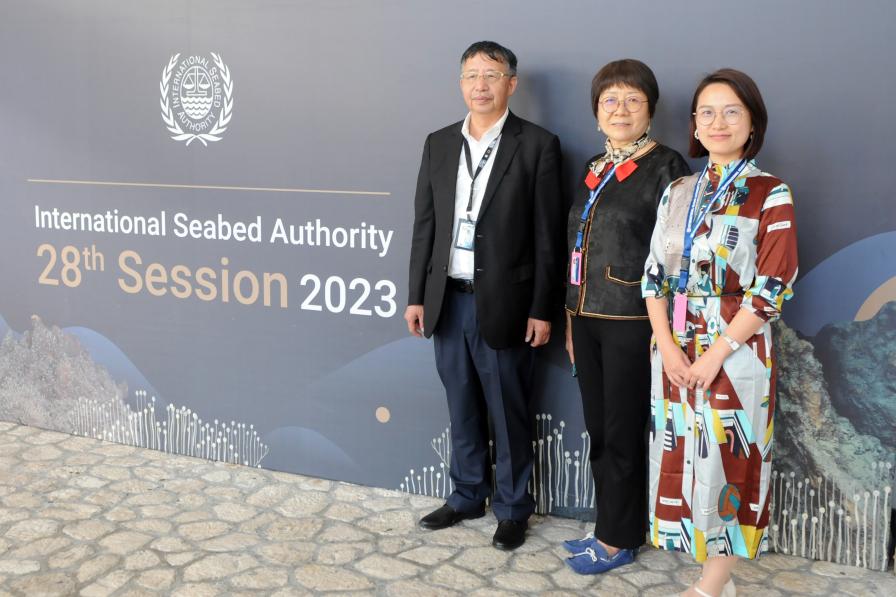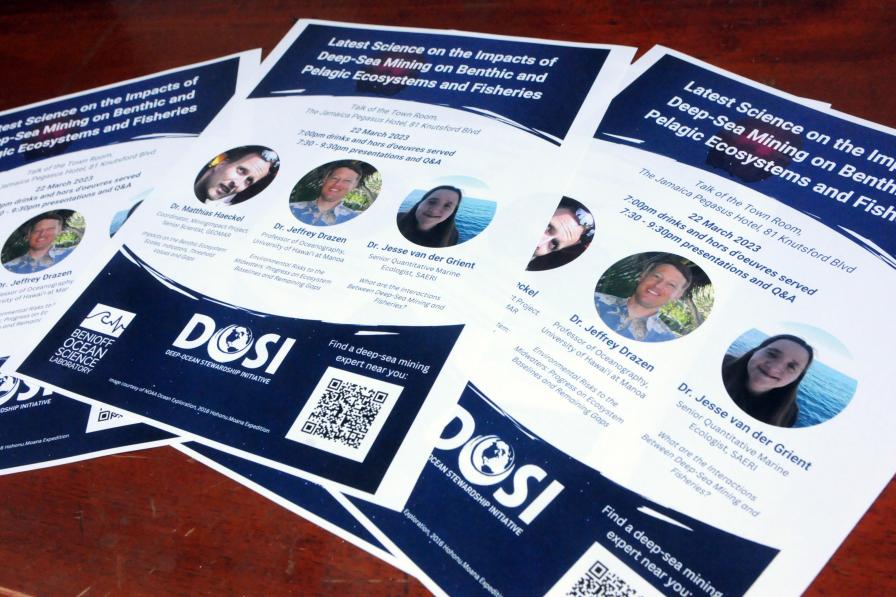One of the most important aspects of the draft exploitation regulations on deep sea mining is arguably the protection and preservation of the marine environment. The relevant informal working group of the Council of the International Seabed Authority (ISA), facilitated by Raijeli Taga (Fiji), kicked off its fourth meeting, which will continue until Wednesday, 22 March.
Facilitator Taga introduced the revised text (ISBA/28/C/IWG/ENV/CRP.1), drawing attention to intersessional discussions on stakeholder consultation. The UK presented on the outcome of the intersessional deliberation, noting that a group of interested parties worked towards a standardized approach, and an overarching objective to ensure a clear process that provides open and effective stakeholder consultation.
Many delegates applauded the work. Observer groups welcomed the initiative, stressing the need to extend such involvement to public participation, and drawing attention to Rio Declaration Principle 15 (precautionary approach) as well as to the relevant pillars of the Aarhus Convention on Access to Information, Public Participation in Decision-Making and Access to Justice in Environmental Matters. They further called for distinguishing responsibilities of the ISA from those of contractors regarding consultations, and suggested “stakeholder engagement” as a better suited term, adding it should be guided by human rights principles.
Two Indigenous representatives of the Pacific communities offered remarks on the cultural and spiritual perspective of Indigenous Peoples towards the Ocean. “We come from the deepest depths of the sea. The Ocean is our life…We refuse to destroy the depths of the ocean, sacrificing the future of our children for the benefit of a few individuals.” They urged promoting a ban on deep sea mining with immediate effect.
Delegates then addressed draft regulations on:
- General obligations (regulation 44);
- Regional environmental management plans (REPMs; regulation 44bis);
- Development of environmental standards and guidelines (regulation 45);
- The environmental management system (regulation 46); and
- Environmental impact assessments (EIAs; regulation 46bis).
On general obligations, the draft regulation addresses the measures for ensuring effective protection of the marine environment from harmful effects, including a number of considerations the Authority should take into account when adopting and keeping under periodic review rules, regulations, and procedures, as well as standards and guidelines. Discussions focused on, among others:
- references to rare and fragile ecosystems;
- whether references to “transportation of minerals to inland facilities, which may include inland processing” fall outside ISA’s mandate;
- reference to the precautionary principle/approach;
- reference to underwater cultural heritage and whether it should be included in the definition of the marine environment;
- reference to “offsetting” harm to the marine environment with some suggesting deletion and others qualifying such offsetting as a last resort;
- adding references to traditional knowledge to complement language on best available science and scientific information; and
- whether reference to indirect harmful effects resulting from exploitation in the Area should be included.
Some delegates requested a consolidated version of the draft exploitation regulations to evaluate consistency and coherence among the different parts. Others pointed to the recently concluded agreement on the conservation and sustainable use of marine biological diversity of areas beyond national jurisdiction (BBNJ), urging for ensuring coherence and consistency.
On REMPs, delegates discussed a revised, streamlined draft regulation noting that the Legal and Technical Commission (LTC) shall only consider an application for a plan of work if a REMP has been adopted by the Council for the particular area concerned. A delegate suggested that the LTC shall only consider an application for a plan of work if the BBNJ agreement has led to the adoption of area-based management tools for 30% of areas beyond national jurisdiction, which will require further discussion.
On the development of environmental standards and guidelines, a regional group stressed that all standards and guidelines to be developed should be smart and fair so that contractors can comply and regulators can assess compliance. Some delegates highlighted a provision that the ISA shall not approve any exploitation activities unless environmental standards have been adopted. Others suggested distinguishing between standards and guidelines, with standards reflecting binding measures, offering to organize intersessional work in this direction. Some further proposed updating environmental standards, emphasizing that they will be developed under limited information and knowledge. A delegate stressed the need for inclusion of indicators and quantitative thresholds to assess the fulfillment of environmental objectives.
On the environmental management system that shall be developed, implemented, and maintained by the contractor, delegates suggested streamlining the text and avoiding duplication. They discussed, among others: timeframes for periodic review of the system; challenges related to third-party certification; and the need to carefully delineate the environmental management system from environmental management monitoring plans.
On EIAs, some delegates underscored that consultations should take place with any states, including coastal states, that may be potentially affected by an activity in the Area. A delegate called for distinguishing between impacts and effects. A regional group suggested that the scoping report shall include binding requirements for the conduct of an EIA. Other proposals included: merging the draft regulations on EIAs and the environmental impact statement; establishing impact reference zones and preservation reference zones; and retaining an analysis of alternatives, including no action, as important parts of the EIA process.
In the evening, a side event hosted by Nauru Ocean Resources Inc. provided an environmental update on midwater and benthic plume modelling for the NORI-D polymetallic nodule collection project.
Text written and edited by Asterios Tsioumanis and Pam Chasek, Ph.D.
All ENB photos are free to use with attribution. For the 1st Part of the 28th Annual Session of the ISA, please use: Photo by IISD/ENB | Diego Noguera
To receive free coverage of global environmental events delivered to your inbox, subscribe to the ENB Update newsletter.

